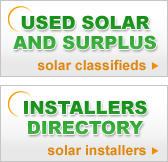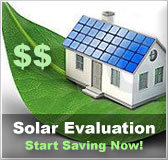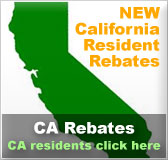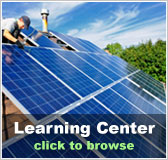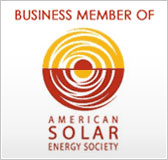Residential renewable energy tax credit:
-This personal tax credit allows the taxpayer to claim a credit of
30% of expenditures including labor costs and installation of qualified
residential solar-electric systems, solar water heating systems or
fuel cells. Small wind-energy systems and geothermal heat pumps can
also be accredited for.
-Solar-electric systems and solar water heaters have a maximum incentive
of $2,000 if placed in service before 2009. There is no maximum incentive
for systems placed after 2008.
-The excess amount of the federal tax credit may be carried forward
to the next taxable year if it exceeds tax liability.
-This can be carried forward until 2016, but after that, it is unknown
if the unused credit will be able to be forwarded.
Residential energy conservation subsidy exclusion:
-This is a personal exemption of 100% of energy conservation subsidies
provided by public utilities.
-The value of a purchase or installation of any energy conservation
measure by a customer such as solar water heat, solar space heat or
photovoltaics will not be included in the customer’s gross income.
-Customers of an electric utility company, who participate in the
utility’s energy conservation program, may receive a rate reduction
of electricity furnished or a nonrefundable credit against the purchase
price of the electricity on each monthly electric bill.
Utility-sponsored loan and rebate programs:
-Many utility loan and rebate programs are available throughout the
state of Oklahoma provided by municipal cities and utility companies.
-Details and requirements for each program will vary.
-Loan and rebate programs are available for customers who install
geothermal heat pumps and water heaters.
-Loans are given at low interest to help with the purchase and installation
geothermal and water heating technologies.
-Rebates are given as a one time set amount for the initial cost of
heat pumps and water heaters or on a “per ton” basis.
Net metering:
-Net metering is available to residents in Oklahoma who have renewable
energy systems or combined heat and power systems and are customers
of an investor owner electric utility.
-If the customer has any net excess generation at the end of the month
the utility will purchase the net excess generation from the customer
at the avoided cost rate.
-Customers keep all renewable energy credits connected to the electricity
their system generates.
-Systems must have a capacity of no more than 100 kilowatts or 25,000
kilowatts per year, which ever is less, to be eligible for net metering.
Energy-efficient mortgages:
-This is a federal loan program where homeowners can use EEM (energy-efficient
mortgages) to finance renewable energy technologies in a home.

